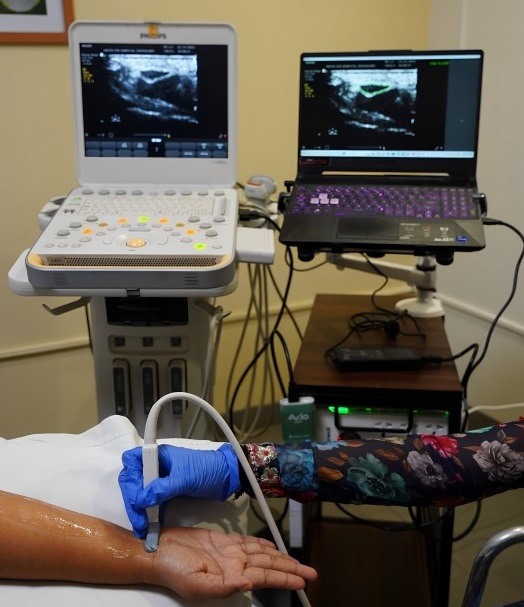Researchers at the Indian Institute of Science (IISc), in collaboration with Aster-CMI Hospital, have unveiled a groundbreaking AI tool capable of identifying the median nerve in ultrasound videos and detecting Carpal Tunnel Syndrome (CTS). The study, recently published in IEEE Transactions on Ultrasonics, Ferroelectrics, and Frequency Control, marks a significant advancement in the field of medical imaging and diagnosis.
Understanding Carpal Tunnel Syndrome:
CTS occurs when the median nerve, running from the forearm into the hand, undergoes compression at the carpal tunnel in the wrist, leading to symptoms such as numbness, tingling, or pain. Particularly common among individuals engaged in repetitive hand movements, such as office workers, assembly line personnel, and athletes, CTS poses a widespread challenge in nerve-related disorders.
The Current Diagnostic Challenge:
Presently, doctors employ ultrasound to visualize the median nerve, assessing its size, shape, and potential abnormalities. However, interpreting ultrasound images and videos can be challenging, especially in areas where the boundaries of the nerve are less distinct. This becomes crucial for treatments involving local anesthesia or median nerve blocks for pain relief.
AI’s Role in Diagnosis:
To address these challenges, the research team leveraged a machine learning model based on the transformer architecture, similar to ChatGPT’s technology. The model, originally designed for detecting multiple objects in YouTube videos, underwent modifications to focus solely on tracking the median nerve. Collaborating with Dr. Lokesh Bathala, Lead Consultant Neurologist at Aster-CMI Hospital, the team collected annotated ultrasound videos from both healthy and CTS-affected individuals to train the model.
Automated Tracking and Measurement:
The developed AI tool demonstrated its ability to track the median nerve throughout ultrasound videos, providing real-time segmentation. Moreover, it automated the measurement of the nerve’s cross-sectional area, a crucial diagnostic factor for CTS. The tool achieved over 95% accuracy in reporting the cross-sectional area at the wrist region.
Future Prospects and Deployment:
While various machine learning models focus on CT and MRI scans, the scarcity of models for ultrasound videos, particularly for nerve ultrasound, sets this innovation apart. The researchers plan to expand the tool’s capabilities to cover all nerves in the upper and lower limbs.
Dr. Bathala envisions the integration of this tool into ultrasound machines, offering real-time assistance to physicians during examinations. As the tool has undergone a successful pilot test at Aster-CMI Hospital, the researchers now aim to collaborate with ultrasound machine manufacturers for wider implementation. Dr. Bathala emphasizes that while the tool significantly reduces inference time, the final diagnosis will always remain the responsibility of the physician. This pioneering AI tool opens new avenues for enhanced diagnostics and streamlined medical procedures in the realm of nerve-related disorders.


